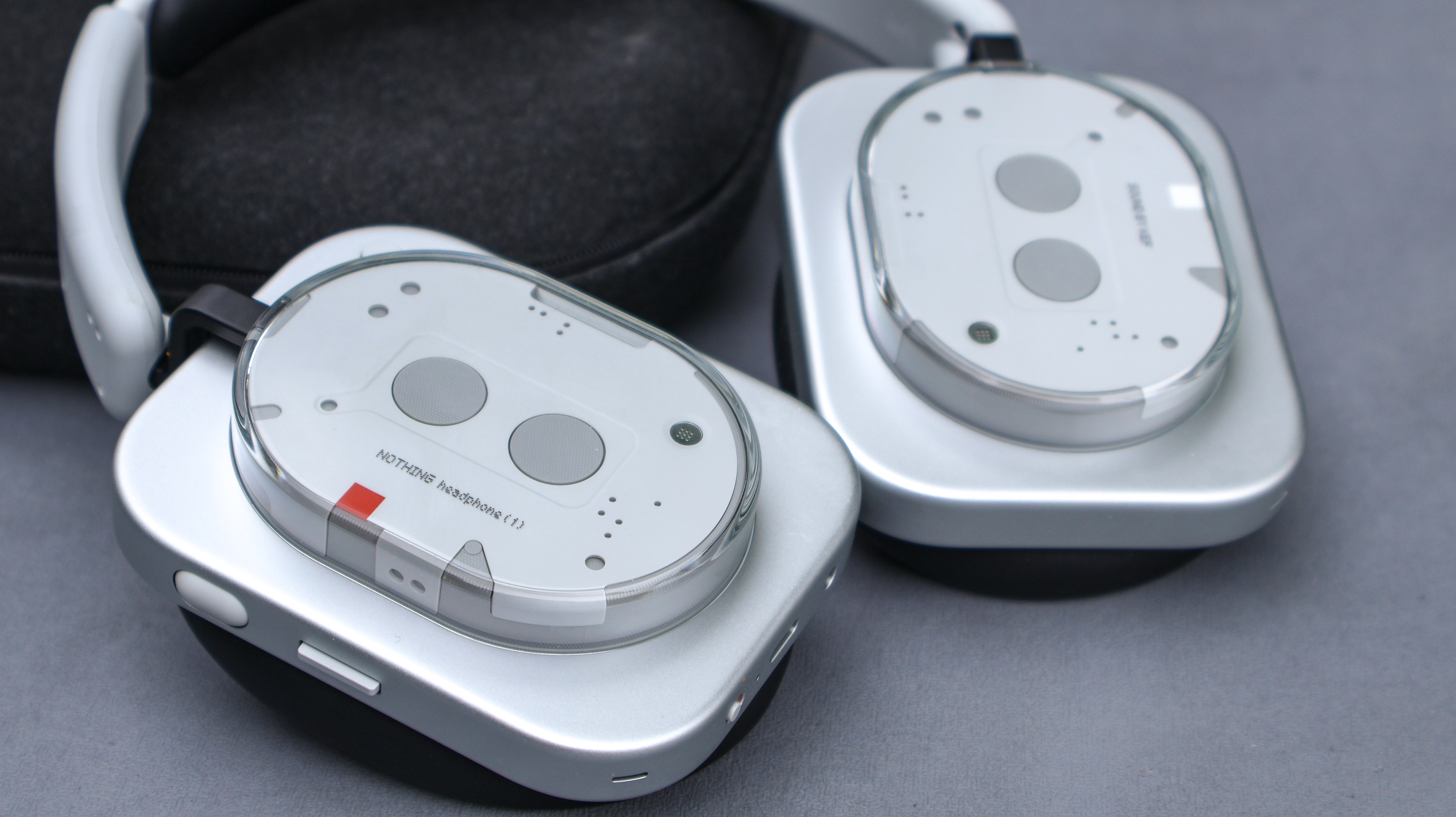Tom's Guide Verdict
Though the PEN-F is pricey, Olympus packed a lot of features and controls into the retro-styled body of the camera, and it offers great image and video quality.
Pros
- +
Cool retro design
- +
Strong 20-megapixel image quality with excellent detail and bright, clean color
- +
Excellent full-HD video
- +
Customizable buttons
Cons
- -
Has trouble focusing in low light
- -
Can't record 4K video
Why you can trust Tom's Guide
Nostalgia ain't what it used to be. Everything seems to be retro these days, with movies, TV and even cameras harking back to an imagined better past. The PEN-F ($1,199; body only) is the retro play from Olympus, because it's a digital version of a camera that it launched in 1963. What this retro design means in practice is a bewildering number of buttons and dials. While this smorgasbord of switches may scare novice shooters, it offers a lot of potential for experienced shooters to customize this camera to their own needs.
Design: Dials, Dials, Dials
Pick up the PEN-F, and you'll notice one thing: lots of dials and switches. I counted nine dials and 12 buttons in total — more than pretty much any camera I've ever tested.
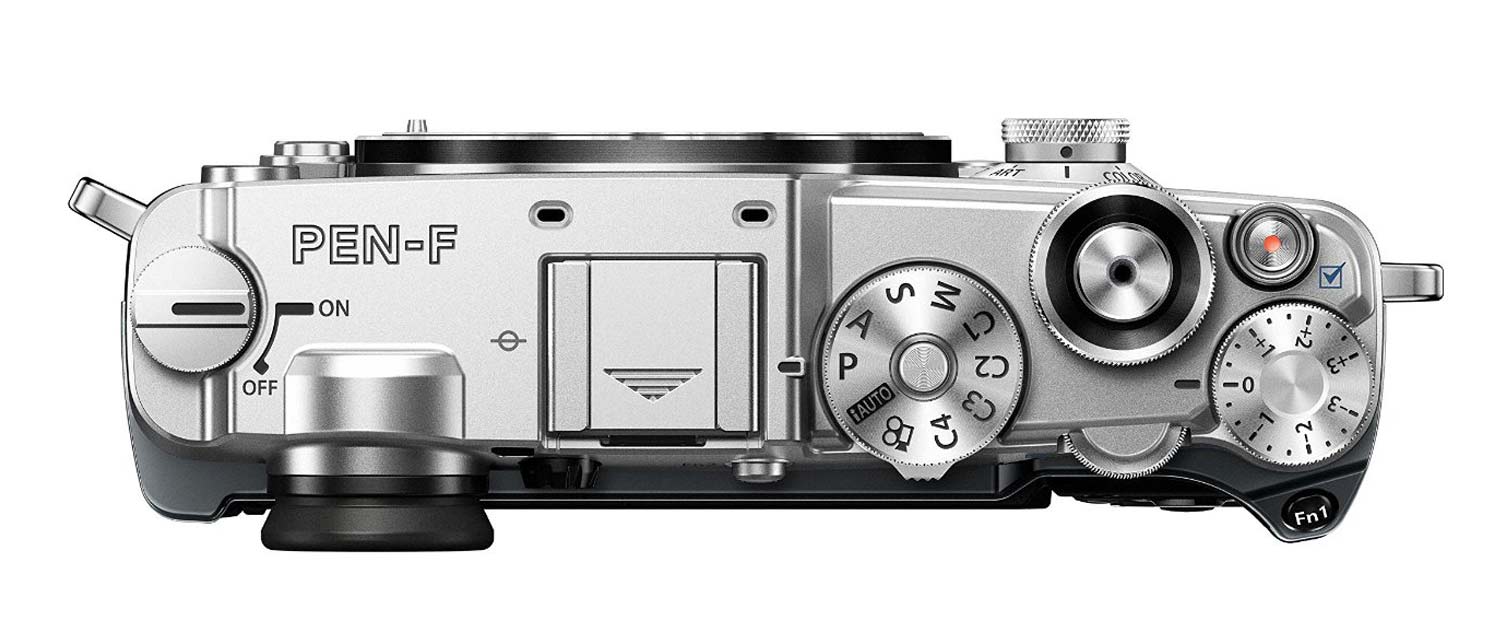
The upside is that you can access the camera's controls very quickly. Need to change the exposure compensation? Turn the dial on the top right of the camera body. Want to start shooting in black and white? Turn the mode dial on the front of the camera body to mono. The downside is that it looks intimidating to a novice shooter; it isn't clear where you start.
This manual approach extends to the $499 17mm Zuiko prime lens I tested with the camera. If you want to use manual focus, just pull the focus ring back that, unlike most, is easy and comfortable to use. It also sports another retro feature: depth-of-focus indicators that show how wide the focus range will be at different apertures.
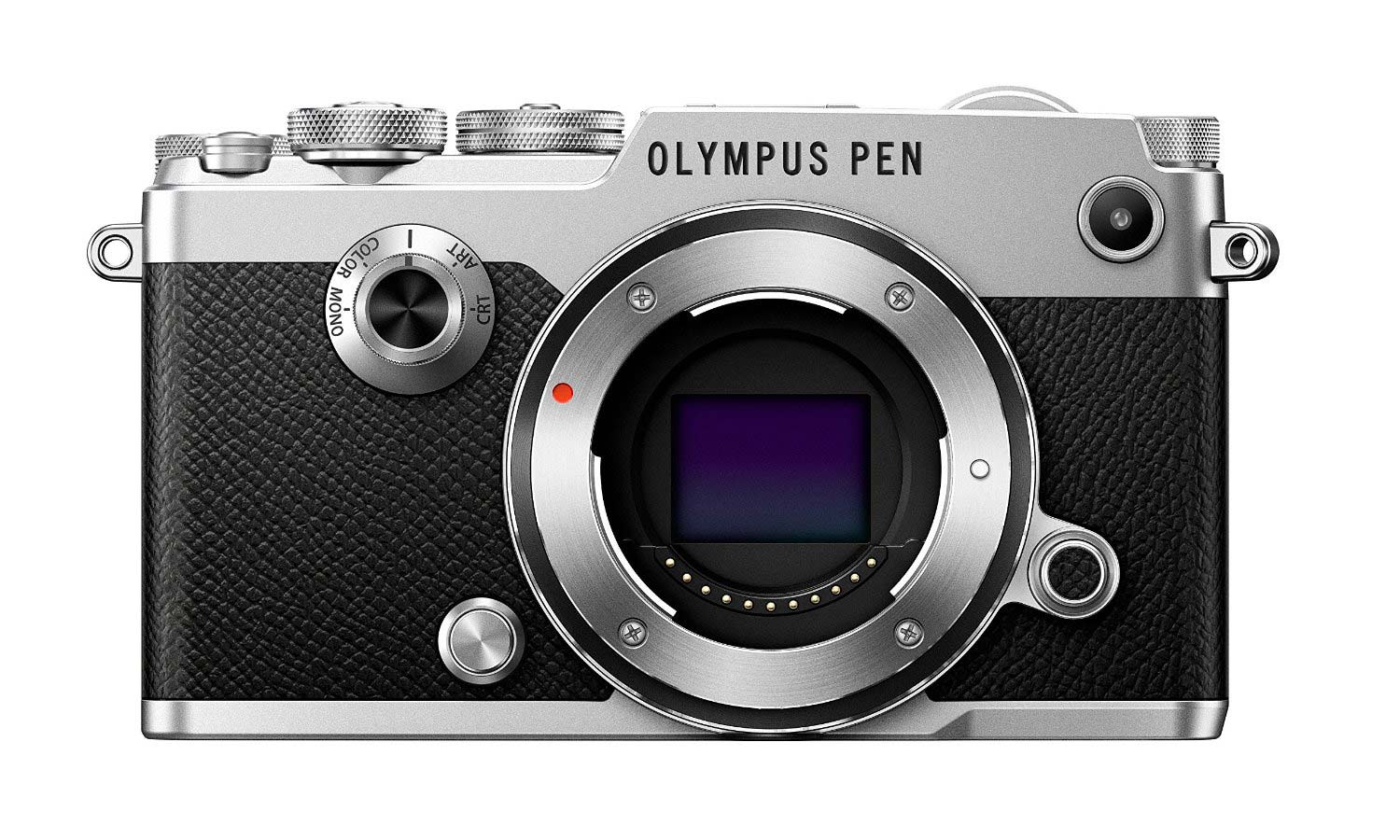
Although it's covered in dials and buttons, the PEN-F is a small camera, with the body measuring about 5 x 2.9 x 1.5 inches. There is a lot of heft to it, though; it weighs 15 ounces. The surface of the body that isn't covered in dials has a textured plastic, which helps you keep a firm grip. A grip on the back provides a nice spot for the thumb to rest, but the lack of a front grip makes it harder to keep a tight hold if you are running or walking; you should definitely use a wrist strap or neck strap.
Most of the buttons have a dedicated purpose, but two function buttons open up your options considerably. By default, the first (called Fn1) works as a focus/exposure lock, while the second switches between the screen and the electronic viewfinder. However, these buttons can be customized to perform pretty much any function required. You can reach the Fn1 button with your thumb when you are holding the camera in both hands, but not when you are holding it in one hand. That's because of the lack of a front grip; the camera slips if you try to reach it.
Viewfinder and LCD
On the back of the camera body is a large display and the electronic viewfinder. This 3-inch, 1037k-dot LCD screen rotates a full 270 degrees, which means you can orient it to watch from above or below, or lay it flat against the body facing in or out. The screen is clear and bright, visible in all but the brightest sunlight.
Get instant access to breaking news, the hottest reviews, great deals and helpful tips.
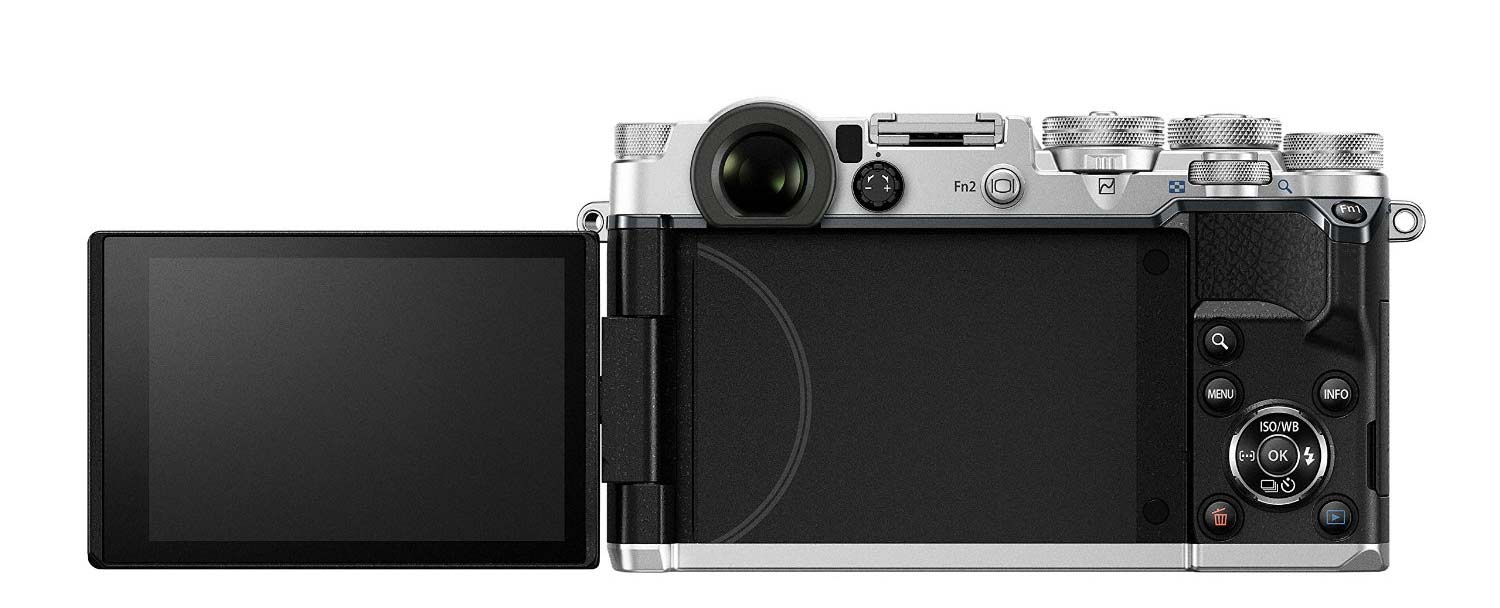
Above and to the left of the screen is the electronic viewfinder, which shows the same information as the screen; the camera switches between the two using a sensor that detects when you put your eye to the viewfinder. This sensor does seem a little oversensitive; it was often triggered by the strap falling across it. Fortunately, this sensor can be disabled, and there is a button nearby that can be used to switch between the two instead.
MORE: Best Cameras of 2016
The electronic viewfinder (EVF) is also clear and sharp (and has double the resolution as the LCD screen), showing a lot of detail in the preview of the image. The rubber flange around the viewfinder blocks stray light, so it can be used comfortably on a sunny day, and the placement on the left side of the camera body means that you can use the EVF with the right eye but still see out of the left. This flange does make the camera difficult to use with eyeglasses, though. There is a diopter adjustment dial, which adjusts it for use without glasses, but it is awkward to have to keep taking eyeglasses on and off to use the viewfinder. A high point viewer that works better with glasses on would be preferable.
Menus and Controls
The plethora of buttons and dials on the PEN-F allow you to quickly access many of the controls that are buried in on-screen menus on other cameras. In full manual mode, for instance, the front dial around the shutter button controls aperture, and the back dial controls shutter speed. In Shutter or Aperture mode, either dial can be used to shift the relevant setting, depending on your grip. In Program mode, the back dial sets the ISO, while the front dial sets the aperture. Putting these controls on a physical dial makes it quicker to tweak them while shooting.
The mode dial on the top of the camera offers settings for the standard PASM (program, aperture priority, shutter priority, and manual) modes, plus the iAuto fully automatic mode, movie mode and four custom modes. These modes can be customized to contain any group of settings. A picture mode dial on the front provides access to a number of commonly used picture modes: CRT, Art, Color and Mono. CRT, oddly enough, stands for Color Creator, where you set the hue and saturation of colors in a ring, allowing you to boost or reduce how each color is captured.
These buttons are just the tip of the iceberg when it comes to customization.
Art enables the last selected picture mode, while Color allows you to boost or remove 12 colors on a color ring to create spot colors or desaturate others. The desaturated colors are replaced with monochrome. The Mono mode shoots in monochrome, but with a twist: The shooter can use a virtual color filter, much like sticking a colored filter in front of the lens. These controls and modes are definitely interesting and useful, but most serious shooters would rather shoot RAW images and tweak the colors or add effects in post-processing.
These buttons are just the tip of the iceberg when it comes to customization. All of the buttons and dials (except the shutter button) on the camera can be reassigned through the same on-screen menu as the Fn buttons. Don't need the video shutter located next to the main shutter because you aren't shooting video? With a few button presses, you can reassign it to depth-of-field preview, select AF area, change to manual focus, enable HDR, or a huge list of other functions. The same is true of the dials, where you can assign pretty much any control to them in each shooting mode.
MORE: Best Mirrorless Cameras - From Beginner to Pro
In addition to the numerous physical buttons and dials, the PEN-F has a touch screen and an extensive on-screen menu that includes all of the features on the dials and many more. This is broken down into five screens — Shooting 1, Shooting 2, Playback, Custom and Setup — each of which contains one or two screens of options. This structure ensures most options take no more than a few taps of the Menu button and the four-way control.
The touch screen is responsive and accurate, allowing you to pick a spot on the screen for focusing, metering or using as a shutter. It can't be used with the on-screen menu, though, which seems like an odd omission.
Image Quality
The PEN-F is built around a 20-megapixel Metal Oxide Semiconductor (MOS) 0.68 x 0.51-inch sensor, which captures images at a maximum resolution of 5184 x 3888 pixels. I found that this sensor is capable of capturing very-high-quality images, with an excellent level of detail and wide dynamic range.
The PEN-F offers five-axis image stabilization, which means that the image sensor can shift on five different axes to compensate for shaky hands. This system performed well. When holding the camera in one hand, I could reduce the shutter speed by a full stop most of the time and two stops (from about one-thirtieth of a second to one-eighth of a second) and still often get sharp images. The system was unable to cope with anything more than a mild shake, though; shooting while moving or in very low light still resulted in blurry images.

There is a wide selection of picture and art filters offered with the PEN-F. The picture modes include a number of different ways for the camera to interpret color, including natural, vivid, monochrome and others. In addition, the PEN-F offers a lot of control over more technical things, such as the gamma of the color curve for up to 12 different colors. That's a lot; few other cameras offer more than two or three individual color axes.

The art filters further process the image to produce a specific look or feel, emulating things like old film, cross processing, watercolor and others. These also include soft focus modes (good for shooting more flattering portraits) and key line, which adds sharp edges to objects. These can be set from the on-screen menu, or by turning the art-mode dial on the front of the camera.

Another interesting trick here is the High Res Shot mode, which can be used when shooting a still object. When in this mode, the camera shoots several images, shifting the image sensor very slightly in between shots, and then combining the images to produce a sharper final image. It produces images that are distinctly sharper and cleaner than those without it, but it only works on absolutely still subjects; even a slight movement will produce a blurry image.
Low-Light Performance

The PEN-F offers an impressively high maximum ISO setting of 256,000. But a word of caution: Images shot at this setting (and indeed anything above ISO 6400) get very noisy, grainy and somewhat dull, with little saturation and flat, bland color. The PEN-F offers a single level of noise reduction, which does a decent job of reducing the noise without losing too much of the detail in the image.

Focus and Speed
We tested the PEN-F with a 17mm Zuiko prime lens, which usually snapped into focus in a fraction of a second. The PEN-F uses contrast detection, where the sensor looks for the point of highest contrast to determine focus. Many modern cameras are adding the faster phase-detection focus system.
In low light and in the continuous-focus mode, the Olympus camera was constantly bouncing the lens between two focus points, trying to decide which was right. This was definitely frustrating, as the constant seeking distracted me from composing the image. Eventually, I switched to single-focus mode, where the camera focuses once when you half-press the shutter.
The Olympus camera was constantly bouncing the lens between two focus points, trying to decide which was right.
The camera had no problem focusing on the stained-glass window in our example shots. However, when I tried to shoot statues and engravings that didn't have much contrast, the camera was slower than I would have liked.
Fortunately, the 17mm Zuiko lens we used in our tests offers an alternative: a large, comfortable manual focus ring. You engage this by pulling the focus ring back, and unlike most manual focus systems on modern cameras, it is actually easy to use, turning smoothly but with the slight resistance that makes it easier to find the focus point.
MORE: Best DSLR Cameras - From Beginner to Intermediate
The PEN-F shoots at a nippy 10 frames per second in the high-speed mode but provides only a jerky preview of the image while shooting at this speed. For a better preview, choose the 5-fps mode. An additional silent high-speed mode is available, which disables the mechanical shutter for silent shooting.
Video Quality
The PEN-F does something that its forebearers wouldn't have dreamed of: It shoots video. We found that this camera could capture excellent high-definition video, with clean, bright color and great detail. Although the quality is excellent, the camera is slow to focus, which means that moving targets or shifting the camera results in a second or so of blurry video as the camera refocuses.
The PEN-F records full-HD-resolution (1920 by 1080 pixels) images at 60 fps. An additional 120-fps mode is available, which is played back at 60 fps for a half-speed slow-motion look. There is no support for shooting 4K video. This higher-resolution mode is available on many rival models, such as the Panasonic GX85 and the Sony a6300.
Smartphone App
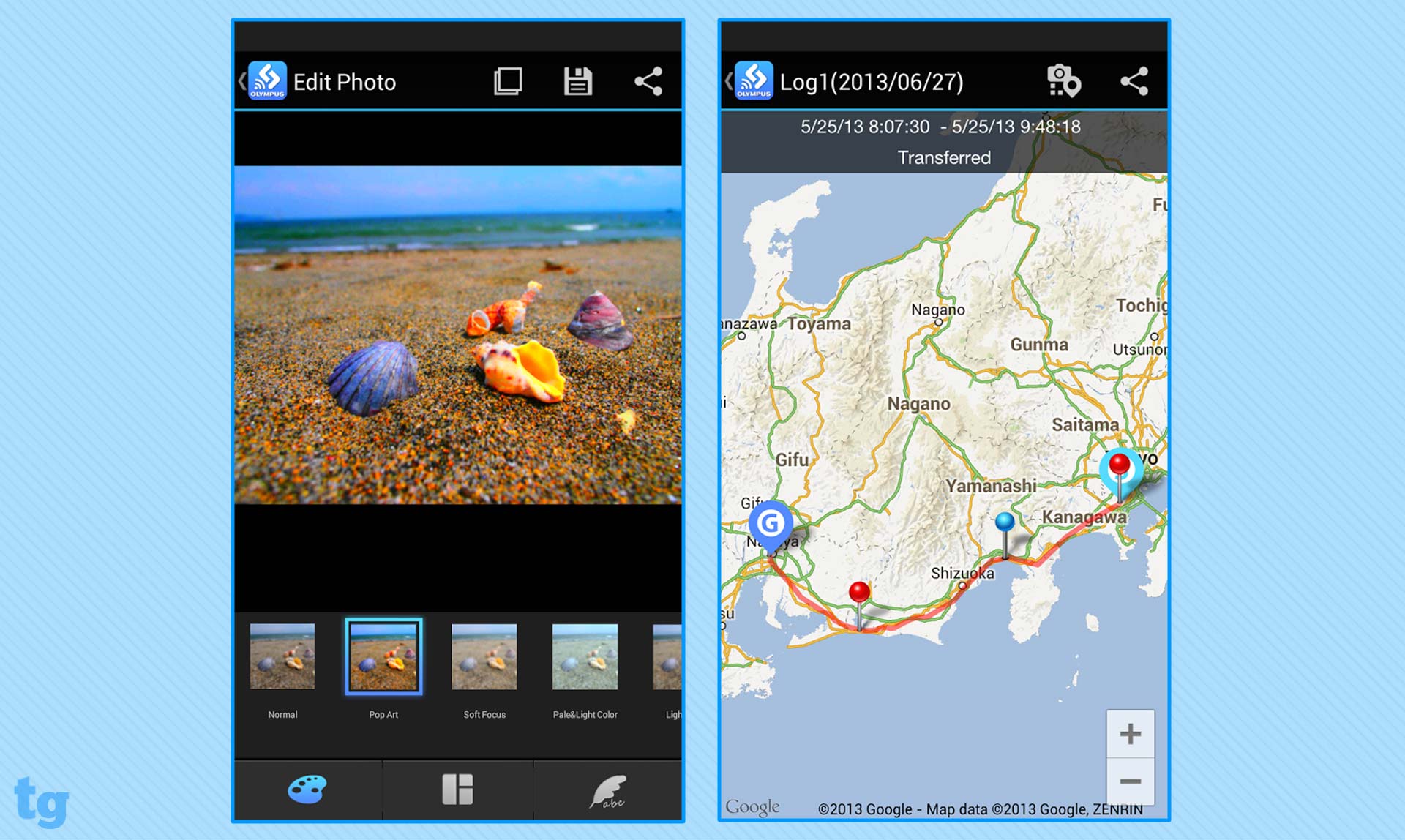
Olympus also offers a free app for both iOS and Android. These apps work with the Wi-Fi built into the PEN-F. This is very simple to set up: you install the app and scan the QR code that the camera shows to connect the two devices.
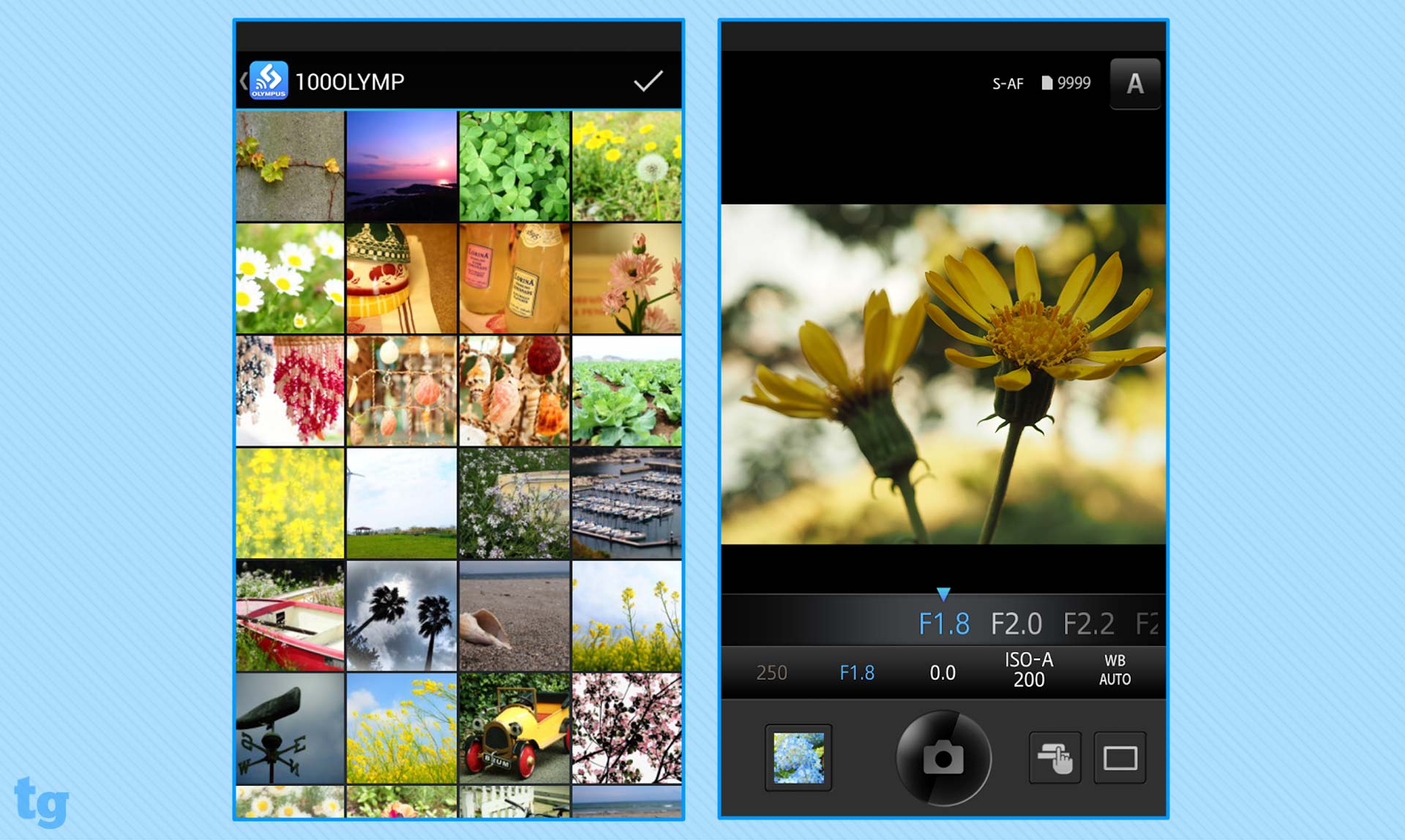
Once the camera and smartphone are connected, you can transfer images to upload to social media sites such as Facebook, add geotags to photos (there is no GPS in the PEN-F itself) or, most interestingly, remotely control the camera. This feature provides a live preview of the image on the smartphone screen and allows you to set the shooting mode (including full manual mode), white balance, ISO and drive speed and, of course, take photos by tapping the screen. There is a slight delay for the live preview, though, which means it won't work for action shooting.
Battery Life
A small 1,220-mAh Li-ion battery powers the PEN-F, which Olympus claims is good for up to 330 shots in CIPA tests. I found that the camera lasted for a good day of shooting, even when using the screen extensively and shooting several short videos. A spare battery is always a wise investment, though, and a second BLN-1 battery will cost you about $50.
Lenses and Accessories
The PEN-F is a Micro Four Thirds camera, which means it can use any lens built for this popular type of lens mount. That covers a very wide range, from ultrawide angles to long zooms. It precludes a lot of older lenses, though, including those built for the original PEN-F. That's a pity, but converters are available that allow you to use other lens types with Micro Four Thirds cameras like this one, including converters for Canon EF and Nikon lenses.
MORE: Best Action Camera - Cameras for Extreme Conditions
Bottom Line
Classic camera fans like me are prone to getting a lump in our throats with devices like the PEN-F, because they remind us of the old-school film cameras we grew up with. Nostalgia doesn't make for good photos, though, so it is fortunate that the PEN-F uses cutting-edge technology under the hood. It has a bright screen and an excellent electronic viewfinder, and produces great photos and excellent HD video. Best of all, it's incredibly customizable. If you are the kind of photographer who sweats over the smallest details, the PEN-F's controls will be a joy.
You are paying for the privilege, though. Priced at $1,199, the PEN-F is more expensive than similar cameras, such as the $800 Panasonic GX85 (which can also shoot 4K video) and the $999 Sony a6300, which shoots at a higher resolution, has much better autofocus and comes with a kit lens. But the customizability, solid image quality and retro feel make the PEN-F a good mirrorless pick for the picky shooter.
Richard Baguley has been working as a technology writer and journalist since 1993. As well as contributing to Tom's Guide, he writes for Cnet, T3, Wired and many other publications.
